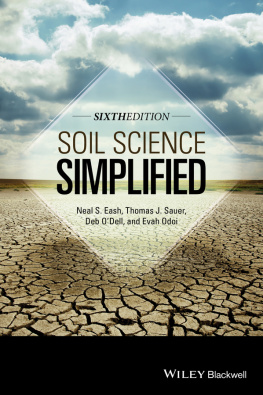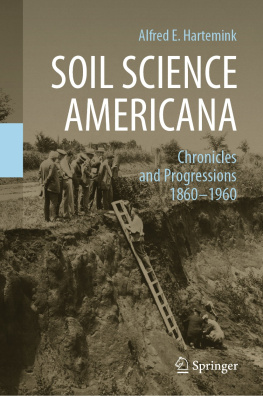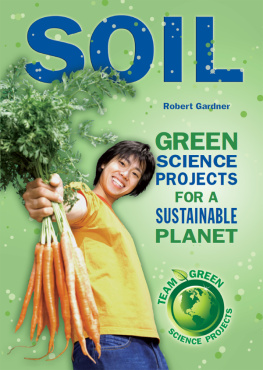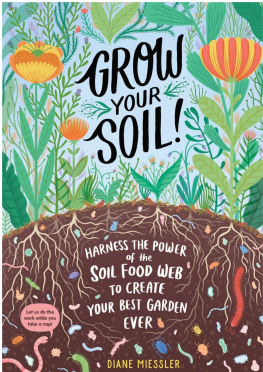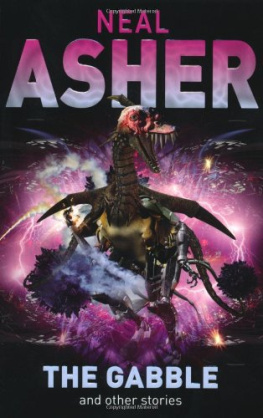Eash Neal - Soil Science Simplified
Here you can read online Eash Neal - Soil Science Simplified full text of the book (entire story) in english for free. Download pdf and epub, get meaning, cover and reviews about this ebook. year: 2015, publisher: John Wiley & Sons, Incorporated, genre: Children. Description of the work, (preface) as well as reviews are available. Best literature library LitArk.com created for fans of good reading and offers a wide selection of genres:
Romance novel
Science fiction
Adventure
Detective
Science
History
Home and family
Prose
Art
Politics
Computer
Non-fiction
Religion
Business
Children
Humor
Choose a favorite category and find really read worthwhile books. Enjoy immersion in the world of imagination, feel the emotions of the characters or learn something new for yourself, make an fascinating discovery.
- Book:Soil Science Simplified
- Author:
- Publisher:John Wiley & Sons, Incorporated
- Genre:
- Year:2015
- Rating:5 / 5
- Favourites:Add to favourites
- Your mark:
- 100
- 1
- 2
- 3
- 4
- 5
Soil Science Simplified: summary, description and annotation
We offer to read an annotation, description, summary or preface (depends on what the author of the book "Soil Science Simplified" wrote himself). If you haven't found the necessary information about the book — write in the comments, we will try to find it.
Soil Science Simplified — read online for free the complete book (whole text) full work
Below is the text of the book, divided by pages. System saving the place of the last page read, allows you to conveniently read the book "Soil Science Simplified" online for free, without having to search again every time where you left off. Put a bookmark, and you can go to the page where you finished reading at any time.
Font size:
Interval:
Bookmark:

Copyright 2016 by John Wiley & Sons, Inc. All rights reserved
Published by John Wiley & Sons, Inc., Hoboken, New Jersey
Published simultaneously in Canada
No part of this publication may be reproduced, stored in a retrieval system, or transmitted in any form or by any means, electronic, mechanical, photocopying, recording, scanning, or otherwise, except as permitted under Section 107 or 108 of the 1976 United States Copyright Act, without either the prior written permission of the Publisher, or authorization through payment of the appropriate per-copy fee to the Copyright Clearance Center, Inc., 222 Rosewood Drive, Danvers, MA 01923, (978) 750-8400, fax (978) 750-4470, or on the web at www.copyright.com. Requests to the Publisher for permission should be addressed to the Permissions Department, John Wiley & Sons, Inc., 111 River Street, Hoboken, NJ 07030, (201) 748-6011, fax (201) 748-6008, or online at http://www.wiley.com/go/permission.
Limit of Liability/Disclaimer of Warranty: While the publisher and author have used their best efforts in preparing this book, they make no representations or warranties with respect to the accuracy or completeness of the contents of this book and specifically disclaim any implied warranties of merchantability or fitness for a particular purpose. No warranty may be created or extended by sales representatives or written sales materials. The advice and strategies contained herein may not be suitable for your situation. You should consult with a professional where appropriate. Neither the publisher nor author shall be liable for any loss of profit or any other commercial damages, including but not limited to special, incidental, consequential, or other damages.
For general information on our other products and services or for technical support, please contact our Customer Care Department within the United States at (800) 762-2974, outside the United States at (317) 572-3993 or fax (317) 572-4002.
Wiley also publishes its books in a variety of electronic formats. Some content that appears in print may not be available in electronic formats. For more information about Wiley products, visit our web site at www.wiley.com.
Library of Congress Cataloging-in-Publication Data:
Cover image: Mycola, wet spot on cracked earth under dramatic sky, iStock / Getty Images Plus
Soil Science Simplified, Sixth Edition explains soil science in an easily understandable manner. Students, professionals, and nonprofessionals alike will gain an accurate working knowledge of the many aspects of soil science and be able to apply the information to their endeavors. The book is a proven and successful textbook and works well as assigned reading for university students in the natural sciences and earth sciences. Agricultural science courses taught at the high school or post high school level can also use this edition as a resource.
Soil science has been largely directed toward agricultural production. Farming remains at the forefront of food and fiber production and is, more than ever, concerned with soil and its properties.
Anyone who works with soil can benefit from an understanding of soil and its properties. Horticulturists, foresters, landscape architects, and similar professionals can benefit from an in-depth understanding of soils. Home gardeners can likewise benefit. Those who construct houses and other structures need to understand that the soil's physical and chemical properties can impact foundation problems. Engineers need the same understanding of soil properties as they build roads, bridges, dams, levees, and similar structures. Environmentalists and people in related areas find a working knowledge of soils useful.
There are many uses of soil-far more than for production agriculture. And everybody who works with the land in any way needs to know how to take full advantage of the information in a soil survey report. The need for an understanding of soil is ever-present. If your profession will involve the use of soil, read and understand the information in this sixth edition of Soil Science Simplified. Keep a reference copy in a handy spot in your bookcase.
This sixth edition expands and updates several chapters. New approaches to the content have been incorporated to provide information needed by those professionals listed previously. A chapter on conservation agriculture (CA) has been added that describes the evolution of agricultural management practices that support and strengthen both food production and environmental resources. The illustrations and photos demonstrate the principles described in the text and enhance comprehension.
Drs. Eash, Sauer, and Odoi are experienced university professors of soil science who have taught and conducted research in soils. Through experience in the field, classroom, and laboratory, they have gained a basic, hands-on appreciation of the importance of applied soil science. This book represents their many years of experience and the desire to provide a working knowledge of soil and how its properties influence decisions on the best use of soil, whether it is used as a medium for plant growth, as a base for the foundation of buildings, or for any other purpose.
This book has been used successfully as a resource in certification programs in the agricultural industry such as the Certified Crop Advisor program sponsored by the American Society of Agronomy. We once again use many of the line illustrations by Mary C. Bratz that have appeared in earlier editions of the book which continue to be useful in communicating essential ideas and processes in soil science.
Introduction to Soil
Soil is a natural resource on which people are dependent in many ways. Since the birth of the soil conservation movement in the 1930s, there has been an increased interest in conserving the soil. The environmental awareness and concerns that have occurred over the past several decades have focused attention on the need to conserve soil as a fundamental part of the ecosystem. There is, however, little public understanding of the soil's complexity.
Careful observers may see soil exposed in roadbanks or excavations, and it may be noticed that the soil does not look the same in all locations (). Sometimes the differences are apparent in the few inches of surface soil that the farmers plow, but greater variations can usually be seen by looking at a cross section of the top 3 or 4 ft. (0.9 or 1.2 m) of soil. The quality and quantity of vegetative growth depends on the properties of the soil layers.

Roadbanks can reveal the complexity of the soil.
Roads and structures may fail if they are constructed on soils with undesirable characteristics. Special care must be taken to overcome soil limitations for specific engineering uses. Satisfactory disposal of human waste and livestock manure is becoming an increasing concern, particularly where soils are used as a disposal site.
Poor yields of agricultural crops and poor growth of trees may result from a mismatching of crops and soils. This mismatching may happen because the landowner has not examined the soil horizons or understood their limitations. Soil scientists study the factors necessary for proper soil management and plant growth.
The traditional meaning of soil is that it is the natural medium for the growth of land plants. The Soil Science Society of America has published two definitions. One is "The unconsolidated mineral or organic material on the immediate surface of the earth that serves as a natural medium for the growth of land plants."
Next pageFont size:
Interval:
Bookmark:
Similar books «Soil Science Simplified»
Look at similar books to Soil Science Simplified. We have selected literature similar in name and meaning in the hope of providing readers with more options to find new, interesting, not yet read works.
Discussion, reviews of the book Soil Science Simplified and just readers' own opinions. Leave your comments, write what you think about the work, its meaning or the main characters. Specify what exactly you liked and what you didn't like, and why you think so.

